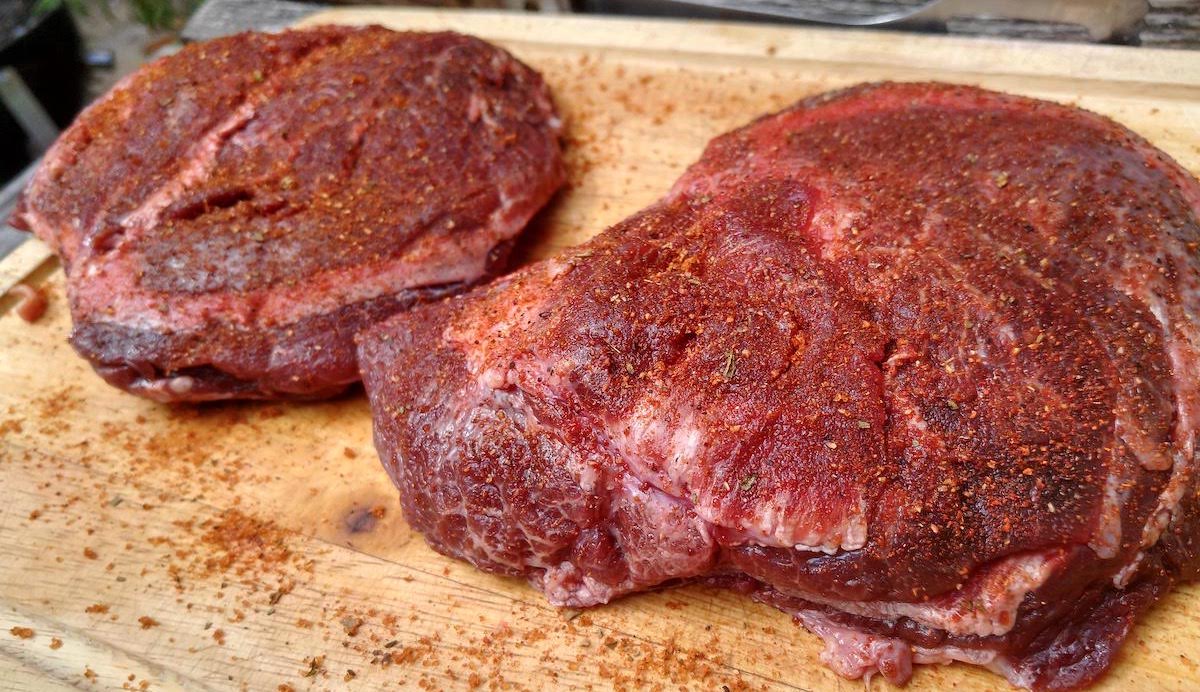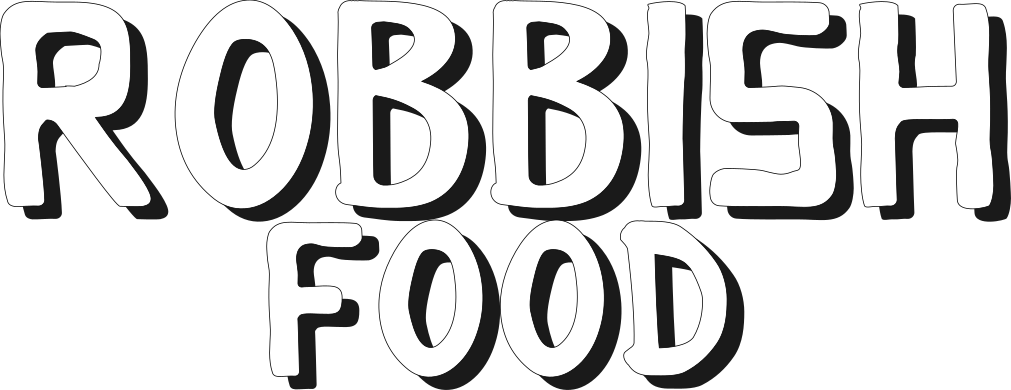How-to BBQ: Low-and-slow smoked beef cheeks (ox cheeks)

If you have already read my write-up on how to low-and-slow smoke beef short ribs, then this may well all sound very familiar to you. The good news is this is not just down to lazy writing, but rather that the two cuts have an awful lot in common!
Both beef short ribs and cheeks are tough, hard working muscles in the cow. They have a tonne of connective tissue that needs to be cooked down gently so it transforms into gelatin and provides a deliciously moist, juicy piece of beef. Furthermore, they both come in similar size cuts (in terms of distance to the thickest part of the meat), and certainly closer to each other than something like a full packer brisket (although that shares lots of similar properties with connective tissue and approach to cooking)
So, with those similarities, it will come as no surprise that beef/ox cheeks are also one of my favourite cuts to smoke on the BBQ. As you may have seen on my OTT chilli recipe, I also love beef cheeks in chillis or stews.
All these BBQ recipes will work equally well on a ceramic kamado grill such as a Big Green Egg or Kamado Joe, a bullet smoker such as the Weber Smokey Mountain or a pellet grill such as Traeger or Broil King - no adaptation of the recipe or technique needs to change. The key element of the approach is simply temperature, what ever grill or even indoor oven you use, you can follow this technique exactly the same. Cook at 110C/225F - 135C/275F this method will work just fine.
1. How to buy beef cheeks (ox cheeks)
Unfortunately, here in the UK, beef cheeks have not made it as mainstream as beef short ribs yet - whilst beef short ribs are becoming more and more available (Waitrose has long stocked them, and Sainsburys has recently trialled their addition).
A quick update for UK, 2022 - I was in Morrisons this summer, and came across pre=packed beef cheeks! They weren’t huge, but were reasonably priced at £9 per kilogram (packages I saw seemed to be around 250grams upwards, so you may want to grab a couple, but they are well priced). Furthermore, they seem pretty well trimmed (maybe excessively so, which would account for the smaller pack sizes, but I couldn’t see that any additional prep would have been needed to start cooking these in terms of trimming)
If you don’t have a Morrisons then do not fear, as they are easily purchased from your local butcher - they should understand if you go in and ask for beef cheeks or ox cheeks. Each cheek from a butcher is likely going to weigh 400 - 500 grams (so almost twice the size as some of the supermarket options), and I’d normally buy a pair to cook (regardless of buying for chilli or BBQ, a pair of them seems plenty enough with leftovers). Even if you have a Morrisons near by, if you have a decent local butcher I’d still recommend the butcher as the size, quality and taste will probably be much better! (plus it’s always good to support local butchers where you can, and most likely, if its a good butcher you will also be supporting local farmers and being more environmentally friendly with reduced transport).
Im not sure why they are often called ox cheeks, bit like ox tail, whilst most of the rest of the cow is referred to as beef - you don’t ask for ox steak or for ox ribs - but rest assured that ox cheeks and beef cheeks are the exact same thing!
2. Preparing beef cheeks for cooking
Beef cheeks are also super easy to prep, probably easier than short ribs just because they are individual cuts so you will likely find they come pretty well trimmed. If not, you might want to trim off some of the connective tissue membrane right on the surface of the cheek, but I generally find no trimming is required at all.
So the next step is simply to apply the rub. The choice of rub to apply is down to taste - I’d generally not go for a sweeter rub, as rubs with high sugar content don’t cope so well with longer cooks.
Normally, before I apply my dry rub, I will apply a layer of yellow mustard (French’s or Heinz) - this will just help the rub stick to the cheeks a bit better, the mustard flavour won’t be noticeable after cooking so you don’t need to worry about people not liking that taste.
Once the mustard is lightly smothered on to the meat, I apply a liberal dusting of the dry rub. This really should be quite a decent covering, so don’t be shy here. If you don’t have any BBQ rubs, a nice 50-50 blend of decent salt and cracked black pepper works great. The meat is really flavourful and robust enough to take on a strong smoke flavour too, so salt and pepper will compliment this perfect. If you are after some commercial rubs, Angus & Oink Moo-mami is an excellent pairing with beef, and so is Good Rub Texas AF rub (this is the one I used on my last brisket cook)
3. How to smoke beef cheeks
As you may have worked out by now, if you have read any other articles on this site, beef cheeks is just another low-and-slow cook, and the basic principles remain exactly the same. Especially the same as beef short ribs, as aside from the bone they are very similar in make-up and size. We will cook low and slow, so we can gradually reach our target internal temperature (96C/205F) that is enough to have melted all the connective tissue to make it beautifully soft, tender and tasty.
Unwrapped, just cooking indirect low-and-slow (grill temp at 110-135C/225-275F) you can probably cook beef cheeks in about 8-10 hours or so (obviously the size of each cheek affects cooking time, but not the number of cheeks!)
As with ribs, brisket, pork butt - pretty much all low-and-slow cooks - We may find that we inevitably hit a stall during cooking (that is when the internal temperature suddenly stops increasing through the cook) - this can last varying times, which adds more uncertainty to the length of the cook.
4. The Texas Crutch: To wrap or not?
A universal technique when it comes to low-and-slow, and universal discussion point, is the Texas Crutch. This technique has already covered in my short-rib article, my ultimate guide to brisket and in much greater detail in my article about humidity and moisture during cooking. But basically, you can speed up the cook by wrapping the beef cheeks tightly in foil or butchers paper and returning to the grill to continue cooking. The bottom line is, by wrapping the meat it traps the moisture and steam that is being released from the meat inside the package creating an extremely humid environment which both creates a more effective cooking environment and also decreases the effect of evaporative cooling that is causing the stall in the first place.
When it comes to beef cheeks, I will often wrap them - I will normally end up pulling the cheeks and having them with nachos/tacos/rolls and wrapping is a good way to get there. The downside is that very humid environment will soften the bark on the exterior of the cheeks, but I find that a fair compromise - and you can always unwrap and stick back on the grill to dry out the surface a bit more at the end if your prefer.
5. Checking for doneness of smoked beef cheeks
Beef cheeks will probably get to an internal temperature of around 96C/205F when they are done. Make sure you are using an internal temperature probe, and as they start to approach this temperature range you can start checking how they feel. By around this temperature, the connective tissue and intramuscular fat should have broken down to create beautifully tender and soft meat, packed with juice and flavour.
To check the feel of the beef cheeks, simply probe the meat in a couple of places with a skewer or temperature probe. You should not feel any real resistance to the meat and the probe should just slide through with ease. People normally use the phrase “probing like butter”, which should give you an idea for the kind of resistance you should be looking for (although they will be talking relatively soft butter, not a block that just came out of the fridge).
- 2 beef cheeks (4-6 people)
- 10 minutes
- 8 - 10 hours
Ingredients
- 2 beef cheeks (also called ox cheeks)
- BBQ Rub of your choice - 50-50 salt & black pepper works great
- Goes well as taco filling, with nachos or on soft white rolls with slaw
Directions
- The timings of each phase can be adjusted, as per notes above. And you should test for doneness when you are unwrapping, it maybe that they are already very tender and cooked at that point.
- Start off prepping the cheeks - you likely won't need much as they are individual, whole cuts, but check for any loose or scruffy bits of membrane or fat that can be trimmed off.
- Apply a light coating of yellow mustard to the cheeks, top and bottom
- Liberally apply the BBQ rub on all sides of the cheeks. If you don't have any BBQ rubs, a generous application of good quality salt and cracked black pepper will work great.
- Set up the BBQ for indirect cooking at 110C/225F, add a few large pieces of wood and smoke the cheeks for 3 - 4 hours. This will let the bark start to form and the meat take on a decent amount of smoke flavour.
- If you have time, you can keep cooking the cheeks uncovered, monitoring the internal temperature. If you are short of time, and hit the stall, then you can wrap the cheeks. Note that cooking right through unwrapped can easily add a couple hours on to overall cook time!
- Optional - If you are wrapping the cheeks, remove from the grill and tightly wrap in two layers of tin foil or butchers paper and return to keep cooking for a further 3-4 hours
- Anytime from 6 hours cooking time onwards, you may be reaching completion - you are aiming to take the beef cheeks off at an internal temperature of around 96C/205F - it may take longer than 8 hours though, so keep monitoring until they are ready.
- Once they reach temperature, take the cheeks off the grill and probe the meat with a temperature probe, there should be very little resistance to the probe as you push it through the meat.
More delicious recipes
This is one of the many fantastic recipes available on this blog
